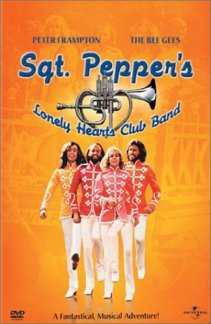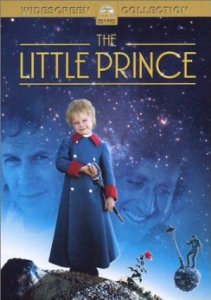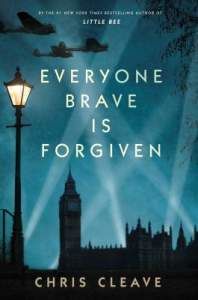
Every once in awhile, a novel comes along with the power to significantly change one’s perspective while simultaneously being a beacon of hope for people who have been forgotten, who are disenfranchised and who remain on the fringes of society.
It happened with To Kill a Mockingbird, the classic novel by Harper Lee that illuminated race relations in the Deep South. It’s plausible to draw comparisons with that and The Story of Beautiful Girl by Rachel Simon.
(A bit of a disclaimer: Rachel Simon is someone whom I consider a friend, as I’ve been a fangirl follower of her career since 1990 when I attended a writer’s conference where she was the keynote speaker. I’ve taken a few writing classes of hers, and we hang out on The Facebook and The Twitter. I have tried to separate all this from the novel, but the truth is? I love her work and have for quite some time. Even if she never gave me the time of day, I would still be saying what I say here about this book.)
As I was saying. Just as To Kill a Mockingbird was and still is, The Story of Beautiful Girl is also a game-changer, this time for people with developmental disabilities who were, once upon a time, “put away,” sent to stark and barbaric institutions with cringeworthy names like The School for the Incurable and Feebleminded, forgotten by families and by the world as a whole.
That’s the name of the fictitious Pennsylvania “school” where Lynnie Goldberg was placed as a young child by her middle-class, Caucasian family who didn’t have the emotional wherewithal to cope with and accept her developmental disability. Such was common in the 1950s and 60s, a time when parents were advised to put their children away to better “forget” about their mistakes in the form of their children who were labeled as imbeciles, idiots, incurable.
(But as The Story of Beautiful Girl illustrates so clearly, forgetting becomes impossible to do when hearts are involved, even when the distance of years and place come into play.)
At the School, Lynnie — who is mute — meets Homan, an African American man who is deaf, but who is only known to the school officials as a John Doe, Number Forty-Two. It’s important to note that he is based on a real person, representing the plight of people of color who had disabilities in that era. Lynnie and Homan become friends and fall deeply in love amidst the neglect and abuse and racial relations that was all too prevalent in such institutions (and which still exists today, here, in the United States). Lynnie is also pregnant, and during one storm-filled November night in 1968, the couple escapes from the School. A baby girl is born, and the couple finds refuge — temporarily — with Martha, a retired widowed schoolteacher living in a remote place, both in terms of place (her home) and in terms of the fragile, unresolved feelings she still carries after her husband’s emotional distance and loss of their only child.
From the book jacket: “When the authorities catch up to them that same night, Homan escapes into the darkness, and Lynnie is caught. Before she is forced back into the institution, she whispers two words to Martha: ‘Hide her.'”
Lynnie and Homan choose Martha’s home because her mailbox is a lighthouse, a beacon of hope for those who are lost. The symbolism of the lighthouse plays out throughout the novel, as Lynnie and Homan and Martha and the baby journey separately (but always interconnected) out of the darkness of their lives into the light. It is not an easy road, and as the reader, you find yourself holding your breath and turning pages to learn what happens next. In doing so, you become immersed in a world that is rarely talked about, one that is shrouded in darkness even today. (For those who may be concerned that the abuse, neglect and race relations are too graphic in this novel, they are not portrayed as overly such. It is more heartbreaking and eye-opening than horrific.)
The most significant aspect of The Story of Beautiful Girl is how it sheds light on one of the biggest disgraces in our country: how we treat those who are developmentally disabled and the people who were put away. Another compelling aspect of The Story of Beautiful Girl is how universal this story is, and Simon conveys that to her reader through the physical sense of place and the spiritual elements present throughout the novel. In regards to place, there were times I wanted to know definitively where the action was taking place. I like to be grounded as a reader, to know where I am. You don’t always have this with The Story of Beautiful Girl, and it took me a few chapters to realize that this jarring was intentional. With the action sweeping literally across the country – from Cape Cod to San Francisco, for example — it illustrates that people with disabilities (and especially those of color) are everywhere in our society. In every community.
Similarly, the spiritual aspect was one that I appreciated about this novel too. It’s hard not to miss the symbolism of the young couple traveling a long distance, the seeking of shelter, the secret birth of a baby in a barn. When the novel opens, it’s November, the eve of Advent and the Christmas season. Yet, Lynnie was raised in the Jewish faith and The Story of Beautiful Girl includes a traditional Passover. Buddhism comes into play, too. These elements are not heavy-headed but again, included intentionally to show the universality of people with disabilities being part of a religious community, even though that community might not know how to address and minister to their spiritual needs.
When I finished The Story of Beautiful Girl, I immediately thought of the phrase “faith, hope and love, and the greatest of these is love.” That is, at its essence, what this book is about. It is about having faith and trust in others, in rebuilding that faith and trust when it is irrevocably taken, and ultimately, having faith and trust in yourself to survive the darkest of nights and go on to do what might have seemed impossible.
It’s about hope that never fades, that survives decades. (“There were two kinds of hope: the kind you couldn’t do anything about and the kind you could. And even if the kind you could do something about wasn’t what you’d originally wanted, it was still worth doing. A rainy day is better than no day. A small happiness can make a big sadness less sad” (pg. 313).
And yes, The Story of Beautiful Girl is very much a love story. It’s a love story that illuminates how people with disabilities aren’t immune to the feelings of love that we all experience. It’s a story about the love between a parent and a child, and how those bonds aren’t always defined by blood or race. It is a love story “for those who were put away” (to whom the book is dedicated), to those who have who have been forgotten and neglected, and those — regardless of color, creed, disability and gender — who have risen from darkness into light and those still journeying on that path.
Reserve a copy of The Story of Beautiful Girl.
~ Melissa F.


 Recently, two of my favorite artists, Beyoncé and Drake, released albums (Lemonade & Views). Beyoncé has wowed the world once again with a visual album. The film to accompany Lemonade aired on HBO a few weeks ago & the soundtrack so to speak was Lemonade. The album is currently available for streaming on Tidal.
Recently, two of my favorite artists, Beyoncé and Drake, released albums (Lemonade & Views). Beyoncé has wowed the world once again with a visual album. The film to accompany Lemonade aired on HBO a few weeks ago & the soundtrack so to speak was Lemonade. The album is currently available for streaming on Tidal.


 I’m someone who holds
I’m someone who holds  As this film opens a title card informs us that what we’re about to see takes place in “another time” and “another place…” Billed as a “rock & roll fable”, Streets of Fire opens with a motorcycle gang, led by Willem Dafoe, kidnapping a famous singer, played by Diane Lane. To rescure her, her agent, played by Rick Moranis contracts her ex-lover, played by Michael Pare (who?), a soldier-for-hire who happens to be passing through town. The ragtag group hijacks a doo-wop group’s bus and eventually track the singer down. This is the movie that actually inspired my journey into the world of weird musicals and it’s objectively a terrible movie. The acting is wooden, the dialogue is stilted but I unapologetically love it. Everyone plays their parts so straight that it just makes it seem like a ridiculous fever dream of the Regan years. It looks like it takes place in the alternate 1985 from
As this film opens a title card informs us that what we’re about to see takes place in “another time” and “another place…” Billed as a “rock & roll fable”, Streets of Fire opens with a motorcycle gang, led by Willem Dafoe, kidnapping a famous singer, played by Diane Lane. To rescure her, her agent, played by Rick Moranis contracts her ex-lover, played by Michael Pare (who?), a soldier-for-hire who happens to be passing through town. The ragtag group hijacks a doo-wop group’s bus and eventually track the singer down. This is the movie that actually inspired my journey into the world of weird musicals and it’s objectively a terrible movie. The acting is wooden, the dialogue is stilted but I unapologetically love it. Everyone plays their parts so straight that it just makes it seem like a ridiculous fever dream of the Regan years. It looks like it takes place in the alternate 1985 from  This and the next film are both from 1974 and they’re both a trip. What was happening in the early-1970s that inspired these kinds of films? Apparently director
This and the next film are both from 1974 and they’re both a trip. What was happening in the early-1970s that inspired these kinds of films? Apparently director  Sadly, this is not a
Sadly, this is not a 

 Chris Cleave
Chris Cleave


 The novel’s protagonist is Celestine North, and she’s the quintessential perfect teenage girl. She gets good grades, has good looks, is polite and never gets in trouble. She also has the perfect relationship with her boyfriend, Art. Celestine lives in a society where everyone is supposed to be perfect. If you do something morally or ethically wrong, then you are deemed Flawed. They have to go to trial, which is run by an organization called the Guild, lead by Art’s father, Judge Crevan. After you’re deemed Flawed, you get branded. There are 5 places on your body where you can be branded: your temple, the palm of your hand, your foot, your chest and your tongue.
The novel’s protagonist is Celestine North, and she’s the quintessential perfect teenage girl. She gets good grades, has good looks, is polite and never gets in trouble. She also has the perfect relationship with her boyfriend, Art. Celestine lives in a society where everyone is supposed to be perfect. If you do something morally or ethically wrong, then you are deemed Flawed. They have to go to trial, which is run by an organization called the Guild, lead by Art’s father, Judge Crevan. After you’re deemed Flawed, you get branded. There are 5 places on your body where you can be branded: your temple, the palm of your hand, your foot, your chest and your tongue.





